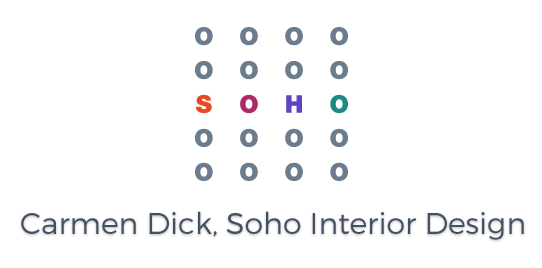Capture the pure joy of carefree summer days as a child with June’s Summer Camp palette. A bright, effervescent collection where color comes to play, these fun-loving hues spark nostalgic wonder and inspire a unique and playful style. With a shade as cheery as Honeydew holding it all together, it’s easy to embrace the creative possibilities. Why I love it: Joyful. Cheery. Soft.
Honeydew is a Fun and Fresh Color
Soft yet energizing, Honeydew’s citrus hue easily fills any space with a fresh and frothy feel. With Fresh Zest as an accent color, you get the perfect combination for infusing a burst of vibrant liveliness without the boldness of more saturated shades. Bring them into a room with lots of natural light to meet the zestier, more expressive side of these hues.
Get the look: Graphic Rug, Eclectic Lighting, Light Wood Tones, Colorful Accents
Perfectly Eclectic
Summer Camp’s lighthearted optimism makes it easy to stray from the familiar in favor of something more fun. From mid-century modern to free-spirited, maximalist-inspired looks, these hues infuse a buoyant energy that can carry any design. The soft denim blue of an Aleutian backdrop keeps it light while bolder punches of saturated color excite the eye. Honeydew’s sweet, happy vibe permeates the room and balances everything out from above.
Get the look: Retro Furniture, Gallery Prints, Brass Fixtures, Large Floor Plants
Room to Be Unique
Whimsical color shines brightest in a unique design style that feels like an endless summer. A room saturated with Honeydew’s citrus hue becomes a blank canvas for personal style to come to life. Infuse a dose of Breathtaking’s breezy, calming influence while Jovial’s happy coral shade, hinted at only through accents, lifts the mood in a perpetual upward motion.
Get the look: Gallery Prints, Graphic Rug, Pastel Palette, Layered Elements
THE SUMMER CAMP PALETTE
Do You Like the Zesty Optimism of Honeydew?
I can help you explore how to bring the fresh, vibrant citrus pastel of Honeydew into your home or office, let's talk. I can guide you on so many ways that this lovely retro hue might enhance your spaces.
And if you feel like other colors from the Summer Camp palette might be a good fit, I'd be glad to consult with you on what makes the most sense for where your ideas take you. Just give me a call anytime at (407) 743-2399.
I’m easy to reach – you can choose a contact method right below this blog post, and we can set up a consultation to explore this friendly, happy shade together. You can also email me at: carmen@sohointeriordesign.com and you can also message me via my website contact page.










